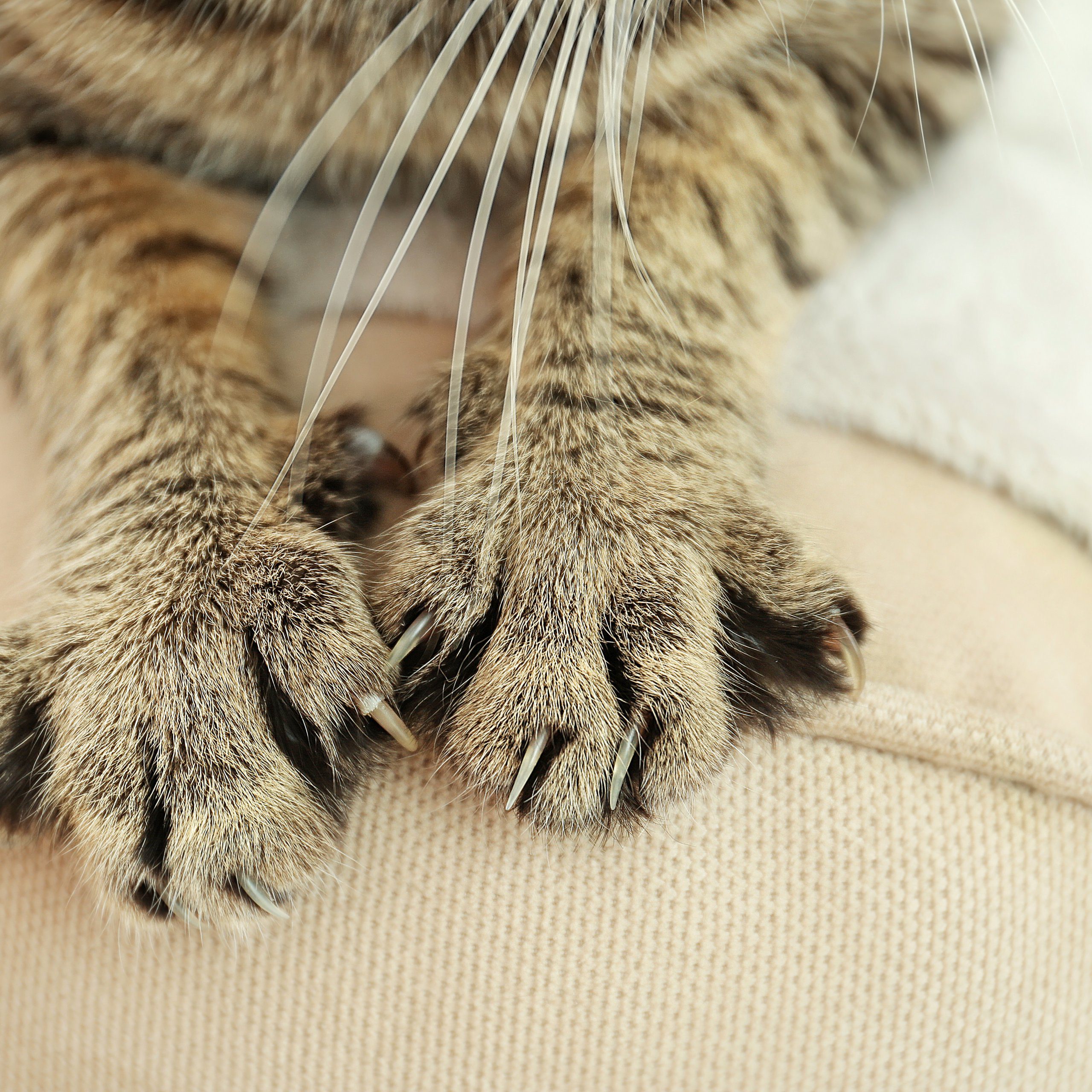Yes, Your Pet CAN Learn New Tricks!
Published January 11, 2022


It’s never too late to teach your pet better habits. Here are easy pet training tips to hack cat and dog behavior in 2022.
Obedience


Does your pet reliably come when you call? If not, don’t worry. Training dogs and cats to obey this simple command is actually very easy.
You know how pets come running as soon as you open their treat bag? The same sort of conditioning applies. Say your pet’s name only once, followed immediately by a treat and praise. It’s best to keep a couple of treats in your hand before starting, so your pet doesn’t associate the treat with the sound of opening their treat container.
As your pet catches on and begins to associate their name with receiving a treat, say their name and then take a few steps back. As your pet approaches, reward with a treat and praise. Over time, you can begin practicing this technique at greater distances.
Keep training sessions brief but consistent and avoid giving too many treats so your pet doesn’t get a stomachache. Pets enjoy working for their food, so you can train during mealtime and reward with kibbles as well.
Remember – you want your pet to only associate their name with positive reinforcement. If, for example, you say, “Buddy, bad dog” when your pet misbehaves, this will create negative associations with the sound of their name.
Destructive Behavior


It can be a challenge to correct a bad chewing habit, but lifestyle changes can be the first step to correct destructive behavior.
First, there is no way to stop your pet from chewing what they shouldn’t when you aren’t around. Always keep objects you don’t want chewed out of reach. When you’re away, keep your pet in a designated pet-proofed area in your home.
Destructive behavior can arise from boredom and separation anxiety, so you can leave safe toys with your pet while you’re gone. Rubbing your pet’s toys between your hands will leave your scent behind, which may be comforting for anxious pets while you’re away. Ensuring you work playtime into your day when you are home will help your pet burn excess energy.
When you are home, teach your pet what is acceptable to play with. When you catch your pet chewing something they shouldn’t, immediately distract them and offer their own toy. Reward your pet for chewing their own toys with praise, treats, and play. Never offer old shoes, socks, or children’s toys to your pet to play with. Your pet can’t tell the difference between the old items they’re allowed to play with versus those that belong to you.
Clawing Furniture


Similar to destructive chewing behaviors, lifestyle changes will help to prevent your cat from destroying furniture. Clawing is a natural behavior cats do to clean their nails, exercise, and to mark their territory. Allowing them to continue clawing appropriate toys will be essential to their overall wellbeing.
Since clawing is partly a territorial behavior, they will be more likely to claw at furniture tend to sleep on. Sometimes, cats will also resort to furniture if they do not have adequate scratching toys. It’s a good idea to keep a scratching post beside their favorite furniture, so they can opt for tearing that up instead. If the post has a platform, this can also give your cat their own spot all to themselves.
When you see your pet using their scratching post, reward with treats and praise. It’s also a good idea to keep a variety of scratching toys throughout your home. Here’s how to make a DIY low-budget scratching corner!
Some cats just have a preference for the texture of certain fabrics. You may also want to place double-sided tape on their favorite scratching spots, since cats usually don’t like the tacky texture. Besides environmental changes, your cat will also do less damage if you keep their claws trimmed. You can add a nail trim on to your pet’s visits at Essentials PetCare for $20, and you can also keep them trimmed at home between veterinary visits.
Tame Incessant Barking


Lifestyle Changes
Excessive barking can have several causes, including anxiety, a desire for attention, or conversely, a desire for visitors to go away. Regardless, the basic principle to encourage less barking is the same: reward quiet behavior and do not cave to barking.
If your dog barks for attention, petting and playing with them to quiet the barking frenzy will only teach them that barking will get attention. However, don’t ignore what excessive barking could be telling you about your pet. Barking could be a sign that a dog is anxious or lonely, so addressing why your pet feels that way is important to their wellbeing.
Follow the tips above to beat separation anxiety, and set a routine for socializing, play, and walks that your pet can depend upon. Simply knowing when you will have time together on a dependable schedule may help, as well as teaching your pet to enjoy alone time while you’re away. You may also want to consider adopting a second dog if your pet is alone all day.
If your pet has a habit of people-watching from the windows, covering these windows or moving your pet to a quiet spot away from busy streets and sidewalks will be a great help as well.
Stop Barking on Command
When you begin teaching your dog to stop barking on command, start in a quite environment without distractions. You can usually get your dog to be quiet and focus with a treat, toy, head halter, or another familiar command, such as sitting or laying down. Once your pet is calm and quiet, say (or gesture) your quiet command and reward.
When you transition away from initial training, catch your dog when they are barking and give your quiet command while holding a treat. Wait until your dog is completely quiet and calm and then reward them. Praise your dog while they remain quiet.
Whatever changes you’re tackling this year, remember that patience is key to training your pet. Your pet will respond and learn best from positive reinforcement and diligent, regular training sessions.
Essential Tip: Join our newsletter and VIP list, and follow us on Facebook, Twitter, and Instagram so you don’t miss any helpful pet content!
Prices subject to change. See current prices: https://essentialspetcare.com/services.



